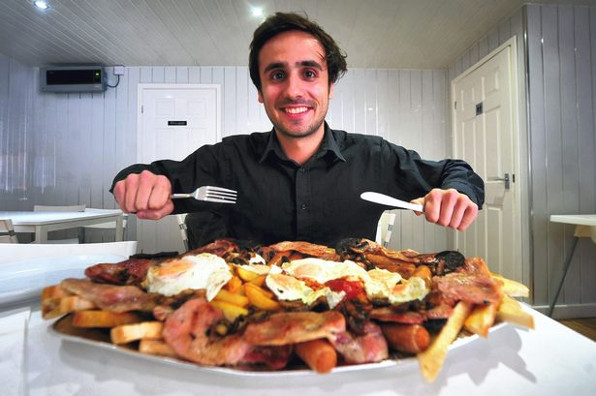This past year has seen many new theories come to light about the causes of, and possible treatments for obesity. It’s generally agreed that obesity is a scourge of modern civilization and it continues to resist all attempts to rein it in… Until now? Alas, I think not.
 The average Full Service meal packs in over 30 percent more Calories than
The average Full Service meal packs in over 30 percent more Calories than
the average Fast Food meal. But that’s just the tip of the iceberg…
A new study has revealed some shocking truths about restaurant meals and what I call ‘institutionalized overeating’.
What they did…
The study measured the calorie content of the most frequently ordered meals from 111 randomly selected full service and fast food restaurants in five countries – Brazil, China, Finland, Ghana and India, plus a larger sample of U.S. eateries. For the purposes of the study, only entrées were surveyed, while beverages, desserts and sides were excluded.
What they found…
Researchers found that large, high-calorie portion sizes in fast food and full service restaurants is not a problem unique to the United States (and, by association, Canada). Data showed that 94 percent of full service meals and 72 percent of fast food meals studied in five countries contained 600 calories or more. That’s more than 25 percent of the daily recommended Calorie intake for the average sedentary North American worker. And some Full Service meals topped 2,000 Calories!
One surprise the survey turned up was that meals from fast food restaurants contained 33 percent fewer calories than meals from full service restaurants, suggesting fast food restaurants should not be singled out when exploring ways to address overeating and the global obesity epidemic. My take on that is, consider that the average Full Service restaurant meal costs around (US)$30. while the average Fast Food meal costs around (US)$10. You get what you pay for. And no restaurant wants to get a reputation for skimping on portions.
In summation… “Fast food has been widely cited as an easy target for diet change because of its high calorie content. However, previous work by our team in the U.S. identified restaurant meals in general as an important target for interventions to address obesity,” noted First Author Dr. Susan B. Roberts of the Energy Metabolism Laboratory at the Jean Mayer USDA Human Nutrition Research Center on Aging at Tufts University. “Eating out is now common around the world, but it is important to keep in mind that it is easy to overeat when a large restaurant meal is likely to be only one of several meals and snacks consumed that day.”
The takeaway…
Eat fewer restaurant meals or order smaller entrées. You’ll save money and be better off health-wise in the long run. But that would put a lot of restaurants out of business in the long run. That’s not a good thing for the economy, or the sustainability of all those low-level jobs that low-income families and seniors rely on to make ends meet. It’s a standoff…
Roberts says restaurants should be encouraged to keep their menu offerings to 600 Calories, max: “Current average portion sizes are high in relation to calorie requirements and recommendations globally. As three meals and one or more snacks in between is common in the countries we studied, large restaurant portions should be examined further for their potential role in the global obesity epidemic.”
As I said earlier, I dare you to tell that to any restaurateur in an ever-more-competitive marketplace!
My take…
As usual, it comes down to this: each of us must make common-sense decisions for ourselves and our families not only about what to eat, but how much to eat. If not for human nature, and the fact that most adults now alive in the western world were taught to clean their plates by parents who had seen tough times, we might be able to implement Dr. Robert’s recommendations.
For one thing, those of us born after the Second World War have come to take for granted the security of our food supply and the great variety we enjoy on our tables. But that’s changing, as scientists and social thinkers keep telling us. A crunch is coming in the next couple of decades, and we will have to change our ways or perish. But, as in other situations where culture and tradition take precedence over common sense and what’s best for us, I believe it will take another couple of generations for western society to grow out of the habits that promote obesity. Popular crusades recommending the switch to a Vegetarian diet and the moderation of eating habits in general, which have appeared and grown up through the first couple decades of this century, give us some hope that we, as a society, are headed in the right direction.
~ Maggie J.

